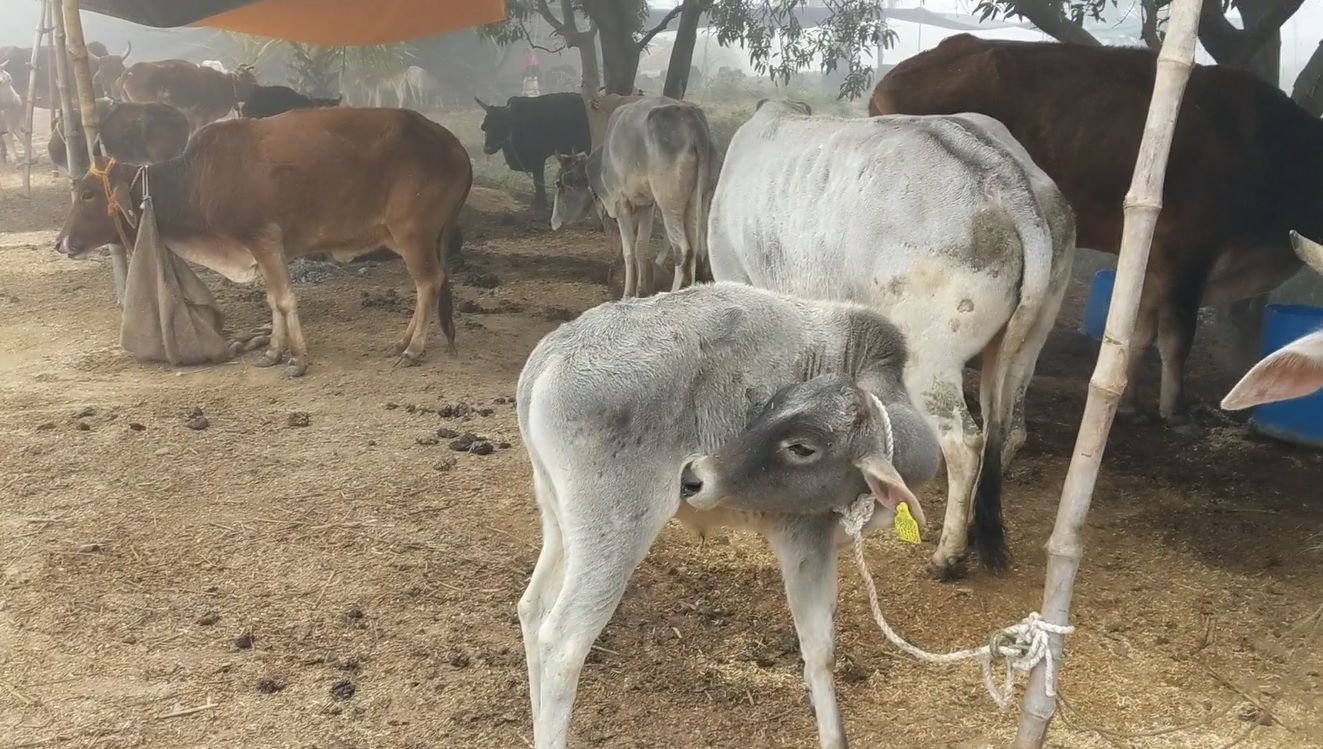India’s first cattle genomic chip — IndiGau — will help identify, conserve and propagate native breeds
For the first time Indian scientists have developed a chip that will carry an exhaustive database on the indigenous breeds of cattle in the country. It is the country’s first genomic chip, and the world’s largest chip of its kind, that will help in conservation of pure-bred native cattle breeds.


Unfortunately, indigenous cattle are slowly disappearing as more and more hybrid ones are replacing them, the scientist pointed out.
In the last few years the interest has shifted to the breeding of indigenous breeds of cattle such as Gir, Sahiwal, Angole, etc., which are considered resistant to several diseases and have genes that make them drought-tolerant, a definite plus in the face of climate change.
In a first, scientists of National Institute of Animal Biotechnology (NIAB), Hyderabad have developed IndiGau, India’s first cattle genomic chip for the protection and conservation of native breeds.
The India-made chip, IndiGau, the first of its kind based on single nucleotide polymorphisms (SNP) was formally launched on August 13, last week, by Jitendra Singh, Union minister of state (science and technology). On the occasion, the minister said that this chip will be of great help to government schemes to conserve indigenous cattle and thereby increase the income of dairy farmers in the country.

Also Read: The disappearing buffaloes of Bhadawar
“India has many indigenous breeds of cattle that are best suited to our environment. They can withstand the heat unlike the foreign breeds,” Subeer Majumdar, scientist at NIAB, told Gaon Connection.
Elaborating on the subject, Majumdar said, “The genes of the indigenous cattle make them drought-tolerant; they can withstand the hot Indian summers. The same cannot be said for the foreign or hybrid varieties of cattle.” Each indigenous breed of cattle is genetically suited to the local environment, he added.

Unfortunately, indigenous cattle are slowly disappearing as more and more hybrid ones are replacing them, the scientist pointed out.
How IndiGau chip works
IndiGau is India’s first genomic chip that will help in the conservation efforts of pure indigenous native cattle breeds. It is also the world’s largest chip with 11,496 markers that will ensure accurate and efficient identification and documentation of indigenous breeds.
Majumdar explained how the chip worked. According to him, DNA information about the indigenous cattle is collected through blood tests and it is stored in the IndiGau chip as a database. The IndiGau database for now will be with NIAB in Hyderabad, with DNA information on the 43 indigenous breeds of cattle.

These 43 indigenous cattle breeds include Sahiwal (Punjab), Haryana (Haryana), Gir and Kankrej (Gujarat), Lal Sindhi (Uttarakhand), Malwi (Malwa, Madhya Pradesh), Devni (Marathwada, Maharashtra), Lal Kandhari (Beed, Maharashtra), Rathi, Tharparkar and Nagauri (Rajasthan), Khillari (Maharashtra) Vechur (Kerala) and Angole (Andhra Pradesh).
“The IndiGau chip has been developed after studying several breeds of native cattle,” Majumdar said. The scientist said that help had been sought from the scientists of the United States of America who are also working on a similar initiative.
According to the scientist, the chip-technology will be passed on to institutions across the country for implementation.
IndiGau to identify superior bulls
Because of cross breeding of indigenous and foreign breeds of cattle, hybrids are everywhere now. Sometimes these hybrid cattle become an added burden, rather than help to the farmers who own them as the hybrids are susceptible to high temperatures and take ill easily. They are not as hardy as the true-bred native breed, informed Majumdar.
The scientists of the Veterinary Research Institute at Bareilly, Uttar Pradesh, have studied indigenous as well as hybrid cattle for several years. According to them the indigenous cattle can adapt themselves to vagaries of weather. They observed that indigenous cattle can better adapt themselves to global warming and climate change when compared to the hybrid cattle.
Keeping these things in mind, the IndiGau chip will be useful in identifying superior breeds of bull. “There is a shortage of a superior breed of bulls in the country and to gauge if the existing ones are good enough, can take anything up to five to seven years,” Majumdar said. This is the time taken for the bull to grow into an adult and impregnate a cow. The cow gives birth and one has to wait for the calf to grow up before it can be ascertained how good a bull or cow it will be, the scientist explained. “But, with the help of this chip, it is easy to ascertain the quality of the breed of the bull even when it is young,” he added.
According to the 19th Cattle Census conducted in 2019, there were 192.49 million cattle in the country. The exotic/crossbred cattle amounted to 50.42 million while the indigenous/non-descript cattle were at 142.11million.
Read the story in Hindi

